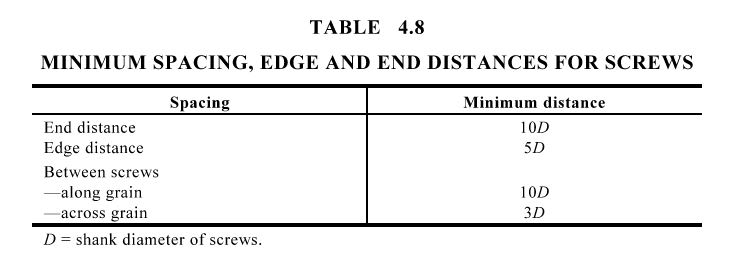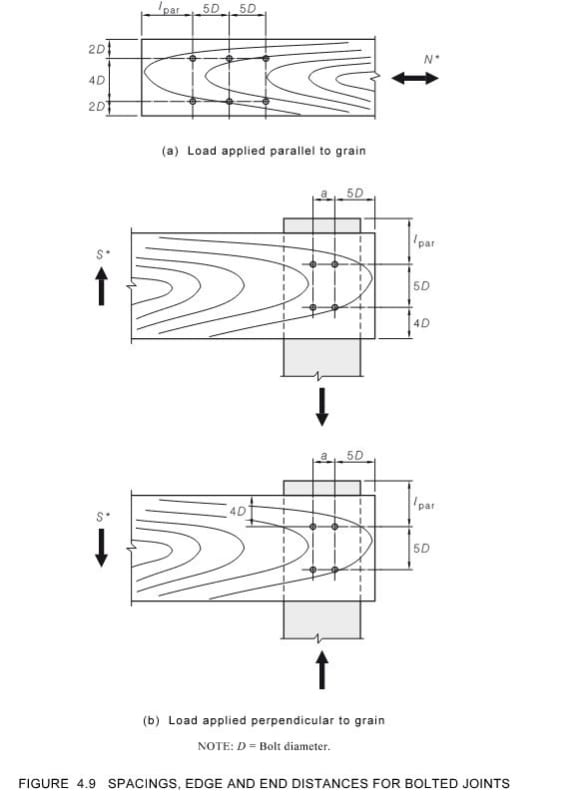Enhineyero
Structural
Trying to find guidance for screws fixed to end grain of a member. Do standard bolt/screw spacing apply for fasteners installed at the cross-section of timber/beam joist? loads perpendicular to grain require an edge distance of 5 x bolt diameter, which cannot be achieved if the fastener is installed at the cross-section of a member.
Say a 90mm deep x 45mm wide joist with 6mm dia screws at the end grain, this will require an edge distance of 30mm, if the screw is placed central to the cross-section, the edge distance of the screw will only be 22.5mm. This is quite a common detail/practice but cannot find any guidance relating to it. Is it just assumed that edge distances do not apply for those installed at the end grain? and limit the fastener layout to a single row?
Say a 90mm deep x 45mm wide joist with 6mm dia screws at the end grain, this will require an edge distance of 30mm, if the screw is placed central to the cross-section, the edge distance of the screw will only be 22.5mm. This is quite a common detail/practice but cannot find any guidance relating to it. Is it just assumed that edge distances do not apply for those installed at the end grain? and limit the fastener layout to a single row?



